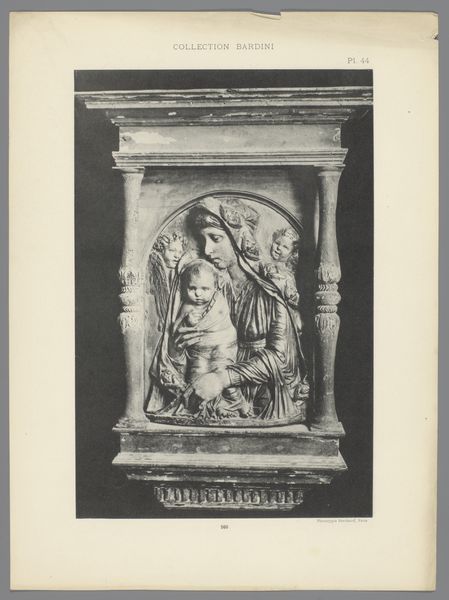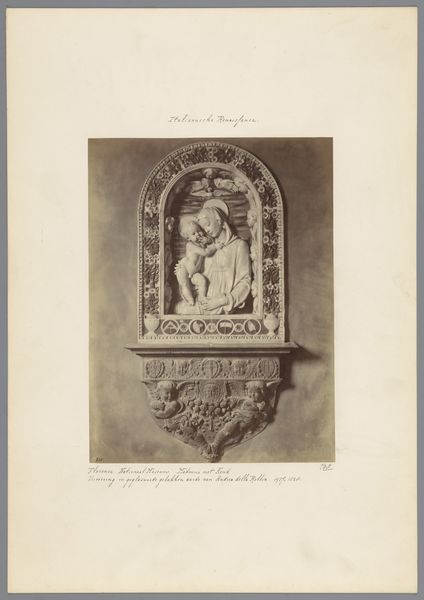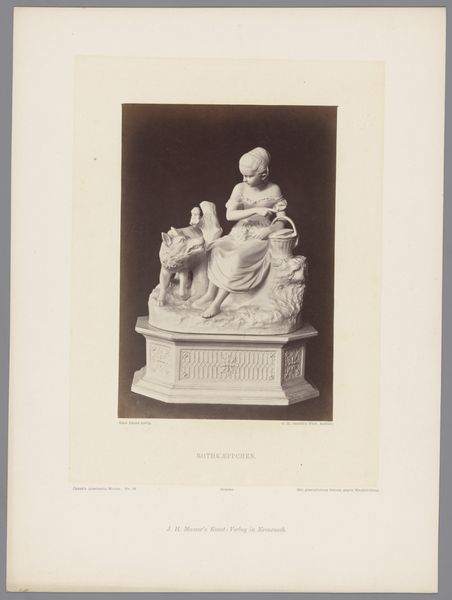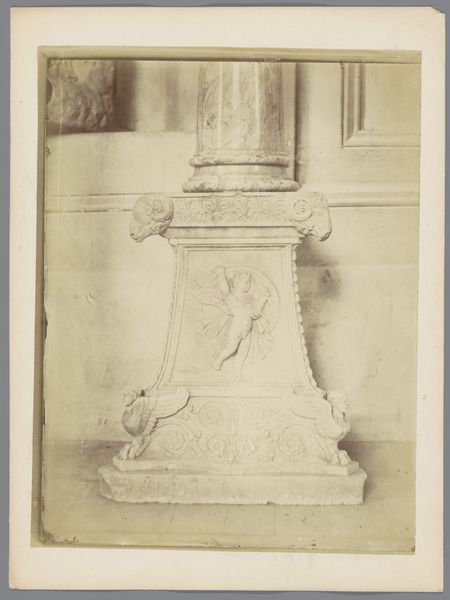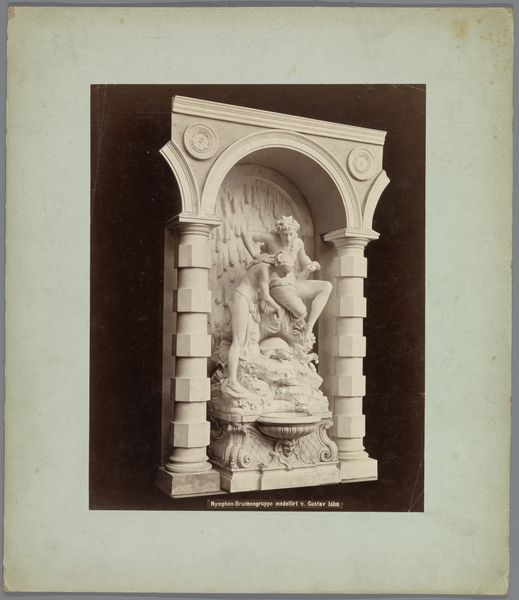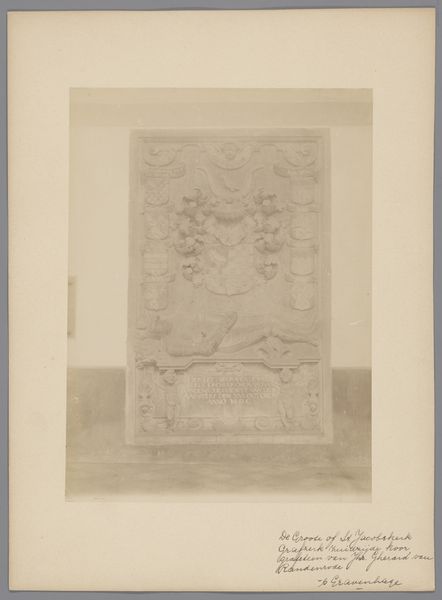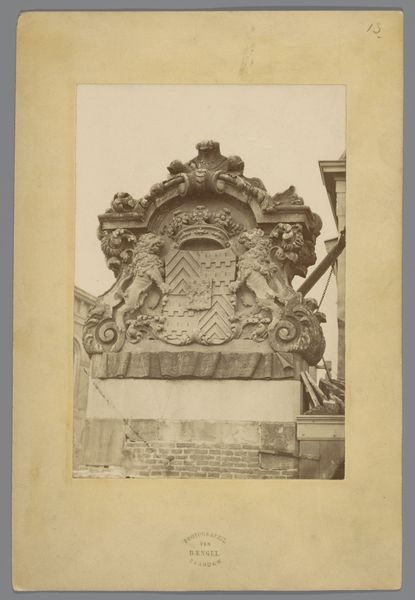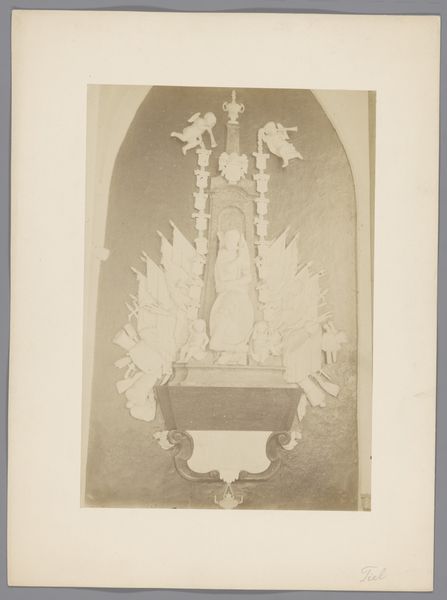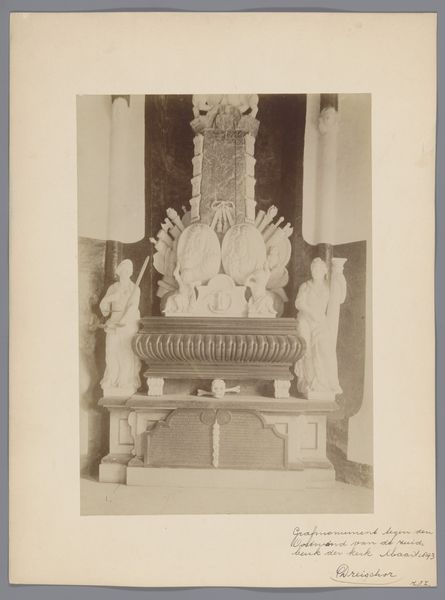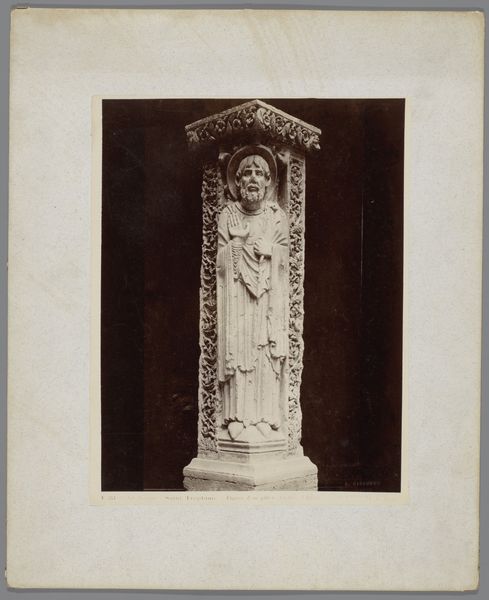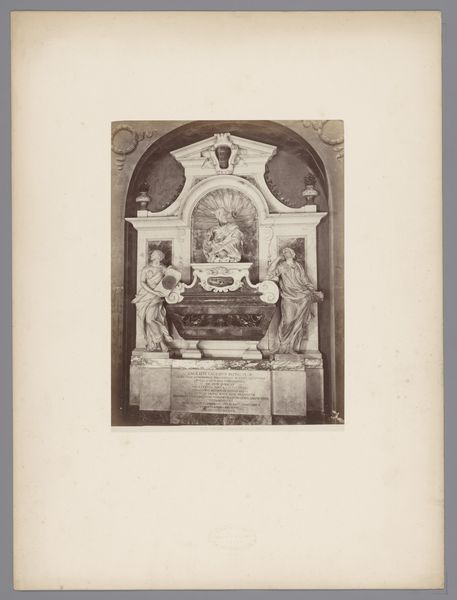
Graftombe van Filips van Hessen-Philippsthal in de Grote of Sint-Jacobskerk te Den Haag 1890 - 1910
0:00
0:00
Dimensions: height 234 mm, width 173 mm
Copyright: Rijks Museum: Open Domain
This photograph shows the tomb of Philip of Hesse-Philippsthal in the Grote or Sint-Jacobskerk in The Hague. It was captured by an anonymous photographer working for Monumentenzorg, the Dutch heritage agency. The tomb’s allegorical figures embody grief and remembrance, common themes in memorial art across Europe during this period. However, its placement within a church, and the very act of memorializing a noble figure, reflect the complex interplay between religious authority, social hierarchy, and artistic patronage. The House of Hesse-Philippsthal was a minor German aristocratic family that was part of the Holy Roman Empire. To fully understand this tomb's significance, one must investigate the history of the Hesse-Philippsthal family, the religious landscape of the Netherlands, and the artistic conventions of funerary sculpture. By exploring these avenues, we can appreciate how art serves as a focal point for understanding social dynamics.
Comments
No comments
Be the first to comment and join the conversation on the ultimate creative platform.
